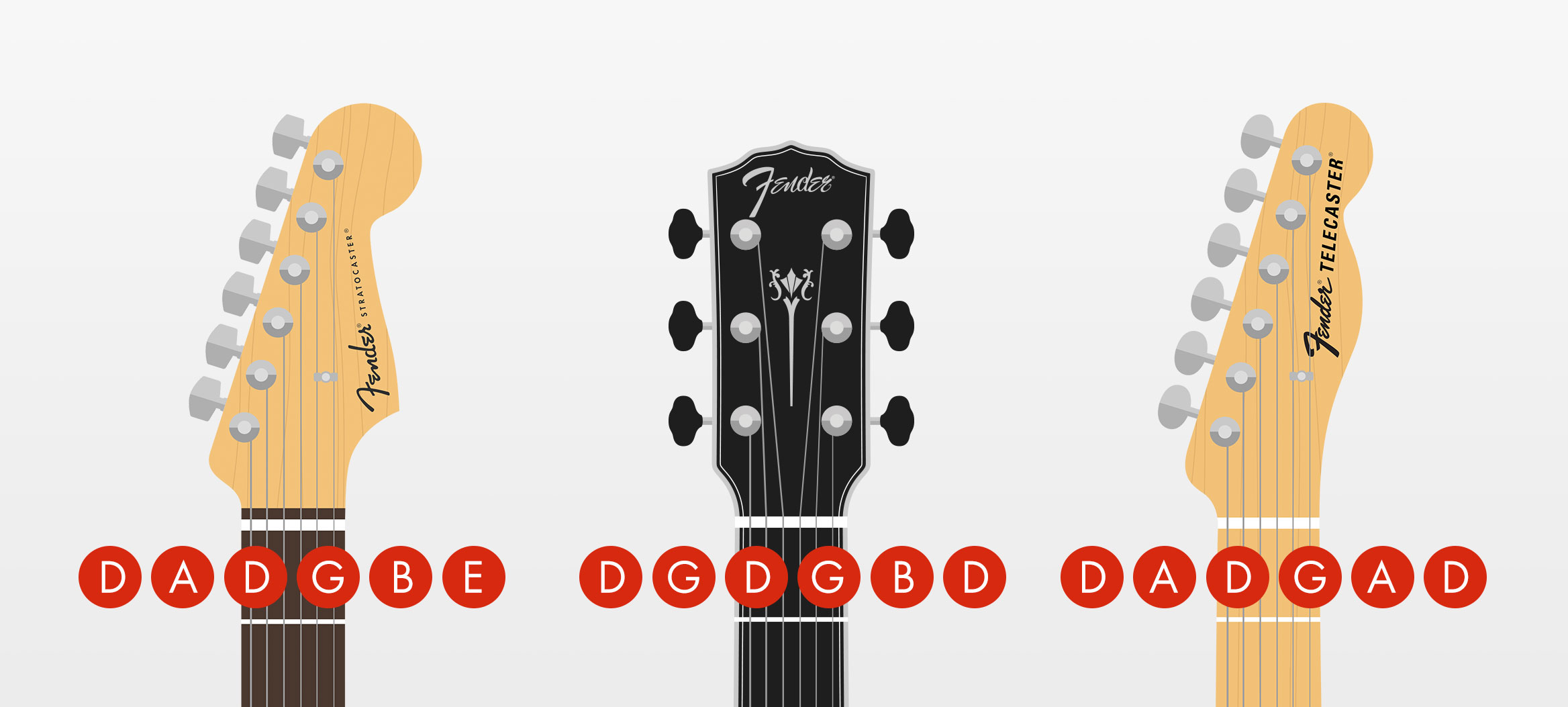
Sections
There’s more than one way to tune a guitar, you know. The standard low-to-high EADGBE tuning has been commonplace for ages, but plenty of familiar songs take musically fascinating advantage of a variety of alternate tunings.
Here are the names and structures of five such tunings (listed low to high in parentheses), along with examples of popular songs that use them.
Drop D (DADGBE)
The most frequently used alternate tuning and one of the easiest ones to work with. The only difference from standard tuning is that the low E string is tuned down to D. Examples include the Beatles’ “Dear Prudence,” Led Zeppelin’s “Moby Dick,” Nirvana’s “All Apologies” the Foo Fighters’ “Everlong” and Soundgarden’s “Black Hole Sun.”
Open D (DADF♯AD)
As the name suggests, basically an open D major chord. Used on the Black Crowes’ “She Talks to Angels” and much of Dylan’s Blood on the Tracks.
Open G (DGDGBD)
They should just re-name this the Keith Richards tuning—heard on the Stones’ “Honky Tonk Woman,” “Brown Sugar,” “Can’t You Hear Me Knockin’,” “All Down the Line,” “Tumbling Dice” and “Start Me Up,” among others. Zeppelin made good use of it, too—“In My Time of Dying,” “That’s the Way,” “Dancing Days,” “Bron-y-aur Stomp” and “Black Country Woman” all being fine examples.
D Modal (DADGAD)
An especially lush-sounding tuning. It is the secret behind the sweeping epic majesty of Zeppelin’s “Kashmir,” as well as “Black Mountain Side.”
Baritone (ADGCEA; perfect fifth below standard) or (BEADF♯B; perfect fourth below standard)
A staple of 1960s country music. In rock music, the guttural almost-a-bass-guitar sound of baritone has been used by everyone from the Beach Boys (“Dance, Dance, Dance”) to Cream (most of Fresh Cream) to the Cure (“Carnage Visors,” “Pictures of You”).
Shop Fender tuners here.
Don’t miss out!
Be the first to know about new products, featured content, exclusive offers and giveaways.


